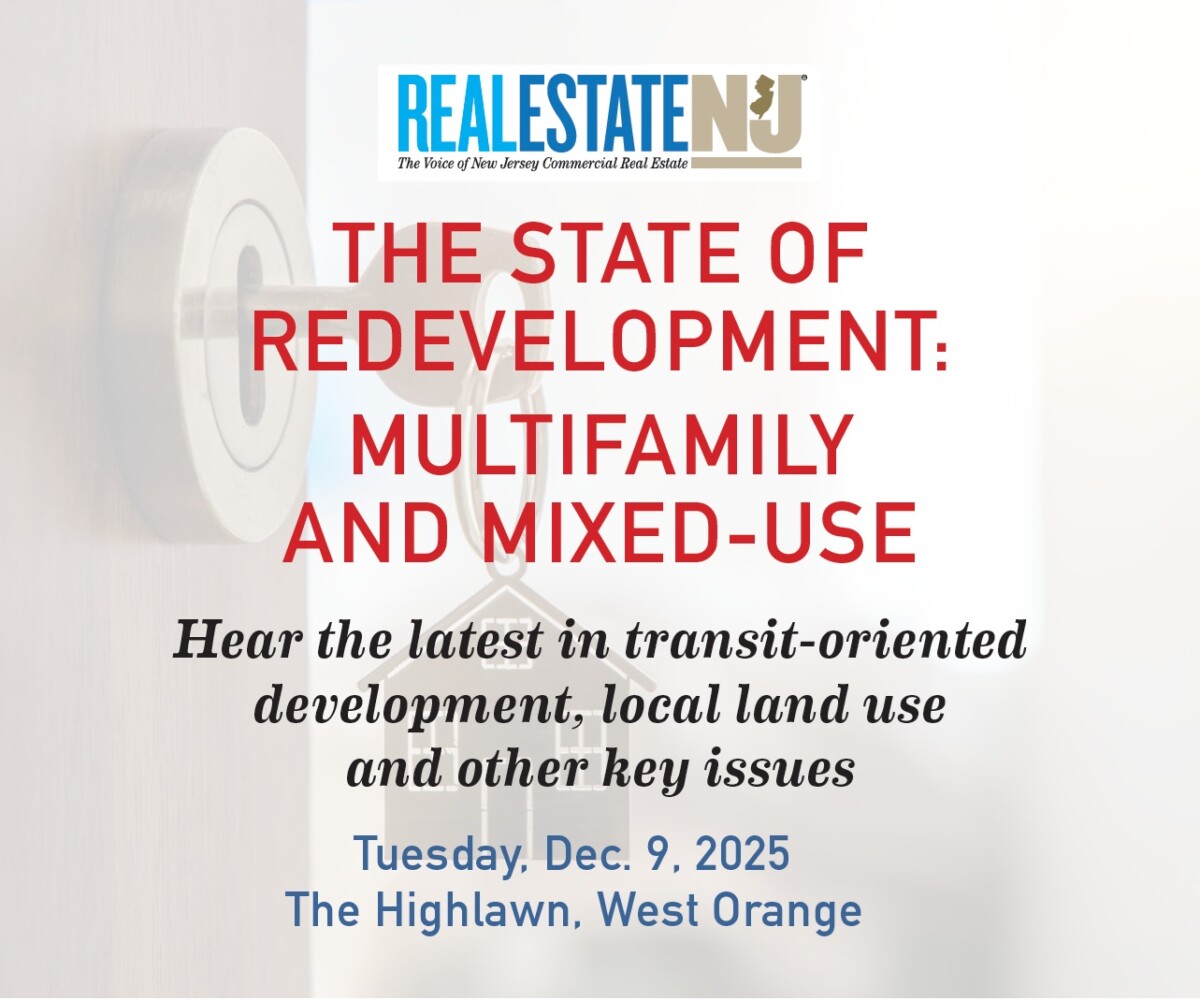Homebuilders joined key public officials at the Atlantic Builders Convention, held from Oct. 11 to 13 in Atlantic City, to confront New Jersey’s housing supply and affordability crisis, pledging a spirit of cooperation as they search for solutions.
By Joshua Burd
For any developer seeking a joint venture partner in New Jersey, Lt. Gov. Sheila Oliver pointed to the dozens of public housing agencies in cities and towns across the state.
Many are open for business, she said, and eager to change the perception of what they can do.

“Public housing authorities in this state have too far been overlooked as potential partners in the building of affordable housing,” Oliver said. “It depends on what housing authority it is around the state, but there are housing authorities that have the ability to do new building — not the traditional kind of public housing that people are accustomed to think about when you say ‘public housing authority.’
“In Trenton, the Trenton Housing Authority developed a beautiful complex,” she added, referring to a new 77-unit property in the northern end of the city. “And when you visit it, you think that it’s a condominium community.”
To Oliver, who also leads the state Department of Community Affairs, it’s one of many ways in which the public and private sectors can join forces to increase housing production in New Jersey. That was likely a welcome message to attendees at last month’s Atlantic Builders Convention in Atlantic City, where she and other officials joined homebuilders to confront the state’s housing supply and affordability crisis, pledging a spirit of cooperation as they search for solutions.
According to the panelists, that can mean everything from updated zoning and parking regulations to expanded subsidies for development and first-time homebuyers.

“Everything you’re hearing up here is about the need to deliver volume, the need to deliver product,” said Debra Tantleff, founding principal of Tantum Real Estate and builder vice president of the New Jersey Builders Association. “This is not a conversation about affordable housing. This is a conversation about housing affordability, and the more housing that is built, the more affordable it is for everybody.”
Experts point to the last two decades as proof. Rutgers University economist Morris Davis said the supply of rental units in New Jersey grew by 14 percent from 2000 to 2019, well below the mark of 24 percent in the rest of the U.S. during that time. That has translated to higher rents in New Jersey for every income level, he said, noting that apartment dwellers earning $50,000 or less pay an average of 22 percent more in rent in New Jersey than in the rest of the country.
He added that, at every income level, New Jersey renters spend a higher fraction of their wages on housing than those in other states. That includes those earning less than $30,000 annually, who spend 50 percent or more of their pay on rent in the Garden State.
Davis said it debunks the notion that renting is more expensive in New Jersey simply because incomes are higher, he said, while showing similar data for homeownership.

“These are alarming numbers,” said Davis, the Paul V. Profeta chair of real estate and the academic director of the Center for Real Estate at Rutgers Business School. “The affordability problem is bad everywhere in the United States, but because rents are higher in New Jersey than everywhere else, the affordability problem — especially for lower-income households — is especially troubling in New Jersey.”
Newark Mayor Ras Baraka called housing “one of the most important issues in the state right now,” noting that his city has a shortage of 16,000 affordably priced units. Other communities around New Jersey are also “grappling with the fact that they have to build affordable housing in their own communities and what that is going to look like,” he said, but development costs have only risen alongside the price of materials, labor and land, among other factors.
Baraka added that Newark is attempting to help by defraying land costs. To that end, nearly 30 percent of properties or buildings in the city are under some form of subsidy.

“We have a huge crisis in Newark and we have a huge crisis in the state of New Jersey, so what we’ve been trying to do is build as much as we can,” he said. Since 2019, the city has allowed for the construction of more than 5,000 units, roughly half of which have been priced for lower-income residents.
Piecing together local and state subsidies has been central to that production and helping to lower the cost of building, Baraka said. And the city is now looking to do the same using federal funds, having set aside about $20 million from this year’s American Rescue Plan Act for developers to build units for families earning 30 percent of the city’s area median income.
Still, housing production remains a challenge across the state. Adam Gordon, executive director of the Fair Share Housing Center, noted that New Jersey is still vastly undersupplied after the so-called gap period starting in 1999, in which the state Council on Affordable Housing failed to produce guidelines for local governments. That changed in 2015, when the state Supreme Court took over the process and ordered municipal officials, housing advocates and developers to work together on crafting and implementing affordable housing plans.

The good news, Gordon said, is that New Jersey in 2019 issued twice as many multifamily building permits as it did in 2015. That number is on pace to grow further in 2021, thanks in large part to the plans that resulted from the Supreme Court’s intervention.
“It’s not perfect, but it’s a functional system around Mount Laurel again and that is driving a lot more development in towns that historically resisted it,” Gordon said, referring to the landmark fair housing case in 1975 that involved the Burlington County township. He noted that affordable housing policy in New Jersey was ensnared in litigation during the gap years, but is now “digging out of a huge hole” with the support of Gov. Phil Murphy’s administration and local leaders in many communities.
South Orange Village President Sheena Collum noted that her community, where the average annual household income is around $150,000, remained a top 10 housing market even through the pandemic. But she said that reflects a lack of supply and the fact that, “as a first-ring suburb, we are not owning our fair share of additional market and affordable housing.”
Collum sought to address the issue after being elected to her first term, in 2015, by establishing a rehabilitation designation across the entire municipality. That allowed the village to capture the tools available under state redevelopment law, such as tax abatements that could help subsidize affordable and inclusionary housing projects, allowing it to “focus on a scalpel approach to our outcomes.”

“It has been nothing but wildly successful,” said Collum, who is also the executive director of the American Planning Association’s New Jersey chapter. “So terms like ‘blight’ scare communities like mine from doing the designations to get to the tools necessary to start building and constructing affordable housing.”
She said the village has also increased allowable building heights and dwelling units per acre, while working proactively with the Fair Share Housing Center to expand capacity for lower-income units.
“Elected officials who want to construct affordable housing, they can do it,” Collum said. “Anything else is nothing but excuses.”
NJBA President Josh Mann, who moderated the panel discussion, noted that Collum won re-election in 2019 with 76 percent of the vote.
“If you’re wondering that this message doesn’t fly in New Jersey, it does,” said Mann, co-founder and co-managing partner of Iron Ore Properties.

“And I think what you’re also seeing is … there’s finally an understanding (that) we don’t want to be California,” he said, referring to the Golden State’s dire housing shortage. “We’ve seen the problems that California has. From a human perspective, it’s depressing to see what happens. We have the ability to avoid that, and the consensus and the understanding that we have to build all types of housing across the economic spectrum is important.”
Local resistance is not the only challenge to building affordable housing, panelists said at the Oct. 13 event. They also pointed to the added costs of complying with or trying to achieve other public policy goals, such as environmental remediation, climate resilience and infrastructure upgrades.
Collum said that makes tools such as payments in lieu of taxes agreements, or PILOTs, all the more “essential to project viability” — despite the backlash from some residents.
“We can dream, we can plan, we can have these aspirational ideas, but if the money does not work, the money does not work,” she said. “And perhaps the worst thing is calling it a ‘payment in lieu of taxes’ because we get raked over the coals at the local level, with people telling us that we’re giving developers giveaways.”
Builders and local leaders have also grappled with a proposed major change to the state’s long-term tax exemption law, under a bill that would impose a so-called prevailing wage requirement on projects that receive PILOTs. The legislation, which cleared an Assembly committee early this year, would raise wages to put them on par with the rates paid to contractors in public-sector projects.

Doing so could more than double the hourly rates for construction workers, Collum argued, making it all but impossible to do projects that seek to provide affordable housing and achieve other policy goals. She then asked state Sen. Troy Singleton, a key sponsor of the bill and a panelist at the NJBA event, to consider the impact it would have on housing production “without figuring out where that gap financing is going to be.”
Singleton cautioned that “there are thousands of bills that get introduced and a very finite number of them become law — and this one is several steps away, if ever, from becoming law.” He also said lawmakers continue to have conversations with local officials, builders and other stakeholders about how to fill that gap if such a bill were to be enacted.
“There is no final decision on any piece or proposal we’re doing,” said Singleton, a Burlington County Democrat.
Baraka said it was critical to address that uncertainty before it was too late.
“We agree that people should be making prevailing wage, but we have to build more affordable units at the same time,” he said. “So we have to figure out a way to make that not be a collision course, because right now it’s a collision course that’s going to prevent us from doing a lot of work.”








